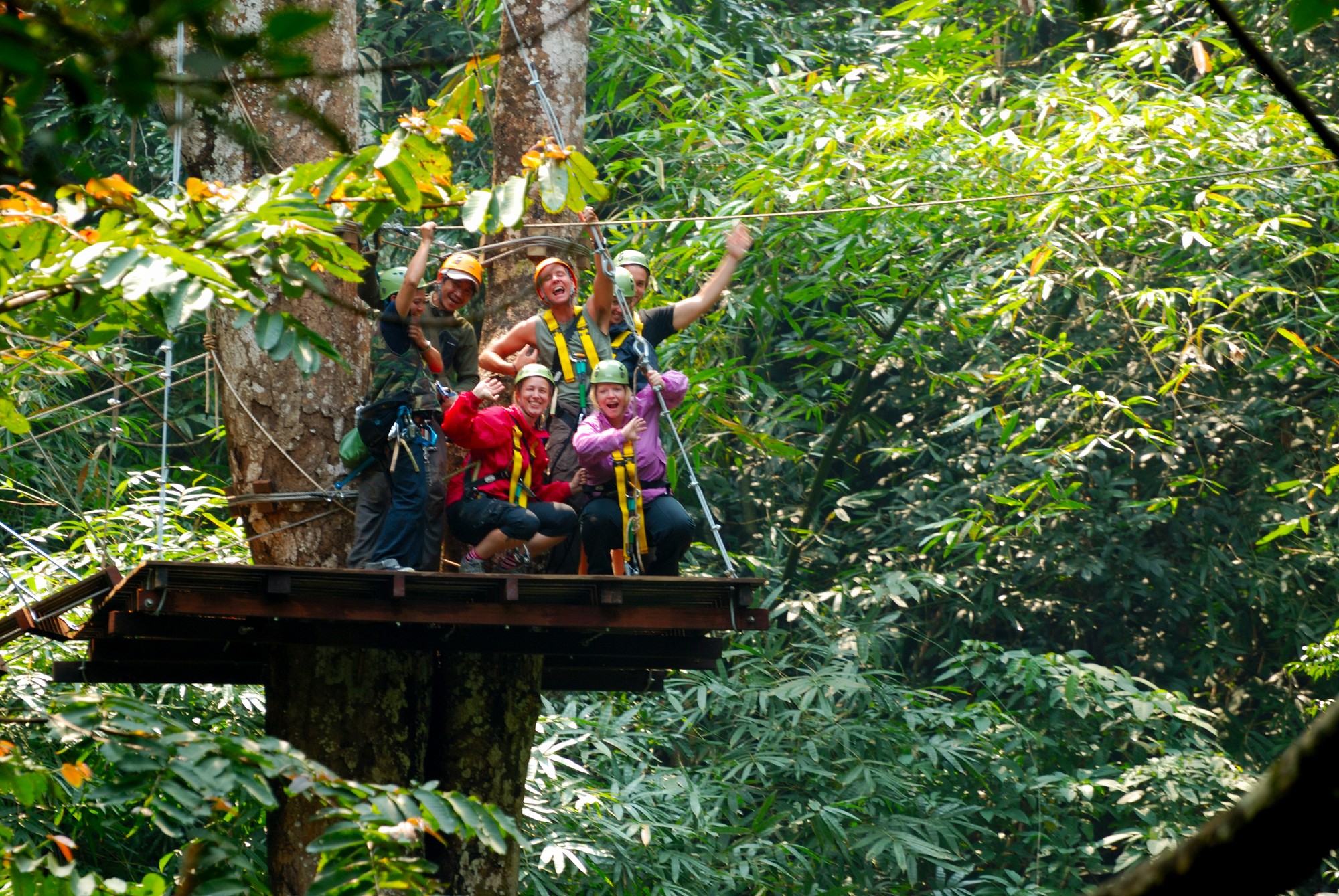Press Release
Flight of the Gibbon, Thailand’s top-rated Zipline company, provides its guests with unforgettable experiences and thrilling flights through the jungle around Chiang Mai and Chonburi. However, Flight of the Gibbon not only focuses on the safety and satisfaction of its guests but places great importance on the conservation of the local forest as well. To support the many royal environmental and economical projects in northern Thailand, they planted an impressive 25,000 saplings in 2016, funded several local NGOs, local institutions and research units, invited 500 disadvantaged children to Zipline for free and advanced the project to reintroduce hornbills to Chiang Mai’s forests after 40 years of extinction.

July kicked off the tree planting season with 5,000 saplings planted in the community forest area at Mae Kampong village. A week later, a further 1,000 trees were planted at Mae. To top it off, an impressive 8,000 trees were planted in Chae Son National Park, and another 11,000 saplings were planted at nearby Tham Pha Thai National Park in close collaboration with park authorities. However, most seedlings require fertilizer, water and weeding for the first three years in order to survive and grow. This makes seedling aftercare a crucial part of achieving long-term success.
“Even though we are proud to say how many trees we have planted, we are even more proud to share how many have actually survived, because this is what really matters in the long run,” explains Demis Galli, Conservation Director at Flight of the Gibbon.
To monitor and learn more about the different types of wildlife in the area and the frequency in which it is sighted, Flight of the Gibbon has invested in a network of camera traps. Already, footage has revealed visits from several endangered animal species including the large Indian civet, palm civet, wild boar, Asian leopard cat, muntjac deer, hog badger, silver pheasants, yellow-throated marten as well as alarming footage of illegal poachers. Visit the Flight of the Gibbon YouTube channel to see the original recordings.
Apart from poachers, deforestation remains a very real threat to Thailand’s landscapes and the animals that are at home there, despite the best efforts of park authorities. This makes Flight of the Gibbon’s work both in funding and organizing tree planting initiatives even more vital to the area’s future. By maintaining the stability of the local ecosystem, wildlife will not only return but thrive in the area, re-establishing the natural diversity this area is known and loved for, both among locals and visitors.
With all the great results of 2016, Flight of the Gibbon is excited to reveal new goals for 2017. These include inviting 1,000 local underprivileged children for a fun Zipline experience. For reforestation initiatives, they plan to plant another 20,000 to 30,000 saplings, to carry out maintenance on newly planted trees and to start a nursery to grow their own saplings. Flight of the Gibbon is also looking forward to starting the construction of the enclosure that will be a temporary home for five pairs of hornbills they plan to reintroduce to Chiang Mai’s forests soon.
“Reintroducing hornbills is a big project that involves a large investment, but it will definitely be worth it. We hope that these magnificent birds will soar again soon in the skies of Mae Kampong,” says Demis Galli, Conservation Director at Flight of the Gibbon.